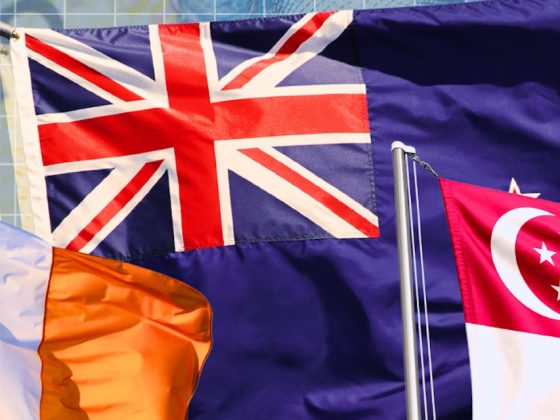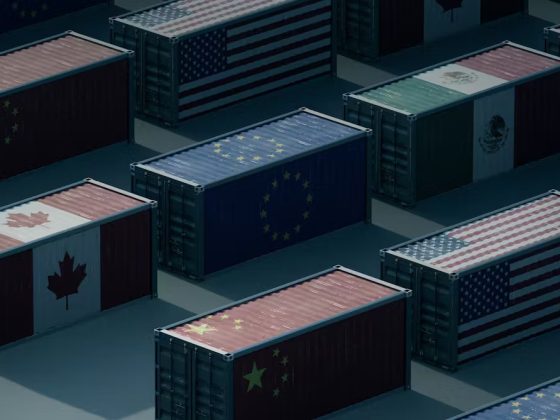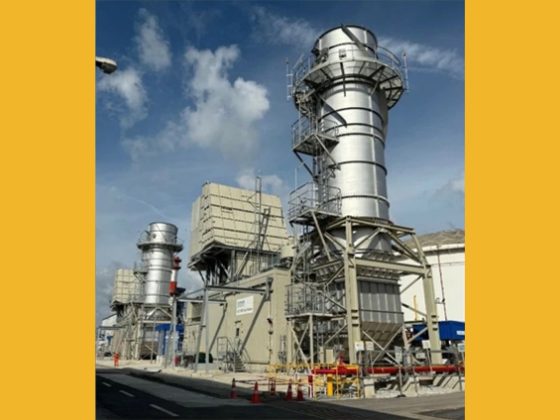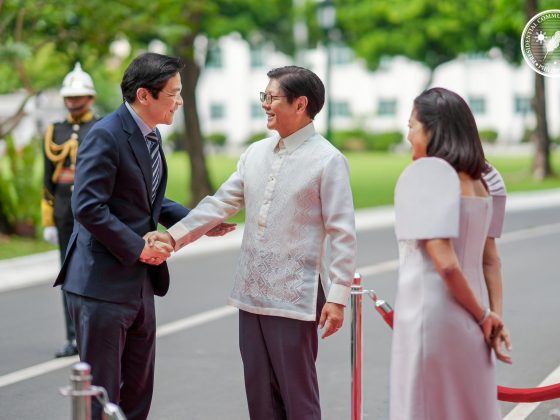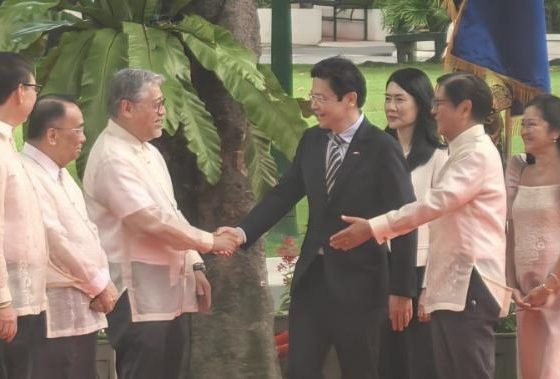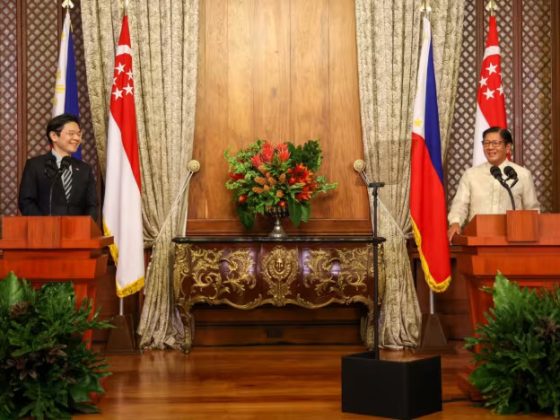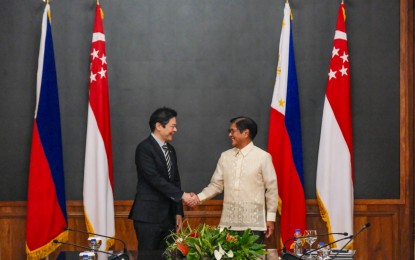Paul O’Shea, Lund University and Sebastian Maslow, Sendai Shirayuri Women’s College
Russia’s invasion of Ukraine and the conflict in Gaza, have left tens of thousands dead and sent shockwaves across Europe and the Middle East. But – brutal and tragic as they are – the wars in Ukraine and Gaza are regionally bounded, meaning that most of the rest of the world rolls along, largely unaffected. This will not be the case if armed conflict breaks out in east Asia.
Thanks to rising tensions in the Taiwan Straits, Kim Jong Un’s sabre-rattling on the Korean Peninsula, Sino-US rivalry and China’s developing alliance with Russia the risks of armed conflict shattering this region are growing, with far-reaching ramifications.
East Asia drives the global economy. Taiwan is pivotal to the global semiconductor industry – essential to modern life. Taiwanese semiconductors power everything from TVs to cars, guided missiles to AI-bots. After Taiwan, neighbouring South Korea has the second-highest market share.
Meanwhile, despite the US and EU’s efforts to reduce their dependency on China, it remains by far the world’s biggest manufacturer. Global supply chains bring commodities, components, and finished goods in and out of the region through major sea-trade routes south to the straits of Malacca and east across the Pacific to the Americas.
Against this tense backdrop, later this year the US will elect a new president. As the incumbent, Joe Biden, struggles in the polls, his rival Donald Trump’s prospects are improving. This is leading to grave and growing concerns in Europe that Trump will abandon Ukraine – and perhaps even Nato itself, overturning decades of security stability in Europe. But what of east Asia?
Cornerstone for Asian security
The security of east Asia – and thus the stability of the global economy – is predicated on a country we have yet to mention: Japan. The US-Japanese alliance has defined Asian security since the early days of the cold war and US troops have had a continuous presence on Japanese soil since 1945.
According to the 1960 treaty on which it is based, if Japan is attacked, the US must come to its defence. The obligation is not mutual, however, thanks to the pacifist clause US officials inserted into Japan’s postwar constitution.
The intention was to prevent Japan becoming a future threat, and the result is that Japan became an “unsinkable aircraft carrier”, with US military bases scattered across the archipelago.
This “Pax Americana” enabled decades of regional peace and economic growth – albeit on terms dictated by the US. For decades, Japan was a sleeping partner in all this: enjoying the peace and prosperity without spending much on its own military or getting involved in US adventurism.
But after years of US pressure to remilitarise, today Japan is increasing military spending and taking a regional leadership role. This is Japan’s response to a rising China, relative US decline, and increasingly isolationist American public opinion – not to mention Trump’s “America first” rhetoric.
‘Proactive Pacifism’
Today’s changes are the culmination of decades of drift from pacifism to “normality”. Following Shinzo Abe’s return to power in 2012, Japan rolled out a new security doctrine in the form of its “proactive pacifism”.
As part of this shift, in December 2022 Japan introduced a revised national security strategy and new security institutions such as a National Security Council. It has lifted a long-standing ban on arms exports, initiated new regional security partnerships, modernised its military, and reinterpreted the postwar pacifist constitution to allow for Japan’s participation in collective self-defence operations alongside allies.
Most importantly, Abe’s government crafted its “Free and Open Indo-Pacific” vision, thus engineering a new geopolitical space that has defined the parameters for rebalancing China’s rise.
These changes were designed to increase Japan’s influence within the context of the US alliance. Then came Trump’s 2016 presidential election. The rhetoric of “America first” increased fears of abandonment in Tokyo. Given the alternative scenario – facing China alone – the Abe government worked hard to keep Trump onside, making trade and diplomatic concessions, and pledging to “make the alliance even greater”.
After Ukraine
Russia’s invasion of Ukraine was the final nail in the coffin of Japan’s postwar pacifism. On the first anniversary of the invasion, Prime Minister Fumio Kishida warned, “Ukraine today could be east Asia tomorrow,” implying that Taiwan could be next.
Continuing where Abe left off, he pledged to increase military spending as well as lifting the remaining restrictions on arms exports, while strengthening Japan’s relations with Nato.
Increasing global instability has prompted Japan to abandon its low-profile, economy-first approach, seeking instead to shape regional and even global geopolitics. By expanding its security role, it has made itself even more indispensable to the US, which sees China as the primary long-term threat.
So, while Japan may fear a second Trump presidency, the risk of abandonment is lower than that faced by America’s allies in Europe. Still, the long-term trend would appear to be that the US is pulling back and expecting its allies to do more. Meanwhile the instability of US politics in an election year means that nothing can be taken for granted.
As the US recedes, can Japan fill the gap? Or will its ambitions exceed its capabilities? Already, plans to further develop its military are hampered by a shrinking economy and a shrinking population. While China faces similar issues, its economy is over four times bigger than that of Japan’s, and its population is ten times the size.
Thus, the only realistic way for Japan to balance China, manage North Korea, and maintain its regional position, is for the US to stay engaged. And even that might not be enough to prevent China from invading Taiwan. The future of the region, and of the global economy, hangs in the balance.![]()
Paul O’Shea, Senior Lecturer, Centre for East and South-East Asian Studies, Lund University and Sebastian Maslow, Senior Lecturer in International Relations, Sendai Shirayuri Women’s College
This article is republished from The Conversation under a Creative Commons license. Read the original article (https://theconversation.com/japan-has-abandoned-decades-of-pacifism-in-response-to-ukraine-invasion-and-increased-chinese-pressure-on-taiwan-225098).




